Today we get back to one of our favourite topics: Roman cuisine! We already
wrote about it more than once, but it is such a rich and exciting topic that we have decided to get back on the subject… by making our own personal ranking!
Rome boasts
ancient culinary traditions,
modern influences and great contemporary innovations. One may almost say that each dish tells an incredible story. The first collection of recipes related to the eternal city dates back to
the times of the Roman Empire! Since then, the habit of eating in taverns and inns has remained well alive to this day, passing down ancient traditions and at the same time constantly enriching the local cuisine with culinary experiments and influences coming from nearby regions as well as from faraway places. In the end, this happens in most of the world metropolis, and Rome has been a world-class city for quiet sometime! But unlike the ancient Latin recipes found in recipe books dating back to the times of the Roman Empire, often rich in ingredients and elaborate in the making, when we talk about modern Roman gastronomy we refer to popular traditions typically made with simple recipes, often prepared with what the surrounding countryside offered or with
recycled ingredients: the so-called “poor cuisine” that dates back to medieval times. Strong has been the influence of the Jewish community of the capital which, starting at least from the fifteenth century, enriched with its culinary tradition that of the Eternal city. Thus, for example, the famous recipe of the artichoke “alla giudia” (literally Jewish-style) was born.
After the establishment of a major slaughterhouse in the central neighbourhood of Testaccio, inaugurated in 1891, the Roman culinary tradition increased the use of the so-called “fifth quarter”, a nice way to talk about what remains of the beef after cutting all the meat, the noblest parts known as the four quarters. These ingredients were already popular before the nineteenth century, as for instance in dishes such as the
coda alla vaccinara or the
Roman tripe. The urban expansion that characterizes the history of Rome from the late 19th century onwards, led the city to welcome large groups of workers from central Italy, but also from the northern region of Veneto and from southern Italy. They all contributed to the birth and to the diffusion of new dishes that, even today, keep the name of Roman cuisine high in the world, as the
bucatini all'amatriciana or the
carbonara for example.
Well, enough with the chit-chat: too many are the reasons why we at Walking Palates had fun compiling our personal ranking of the 10 Roman dishes that we most appreciate!
1. Carciofi alla giudia (Jewish-style artichoke)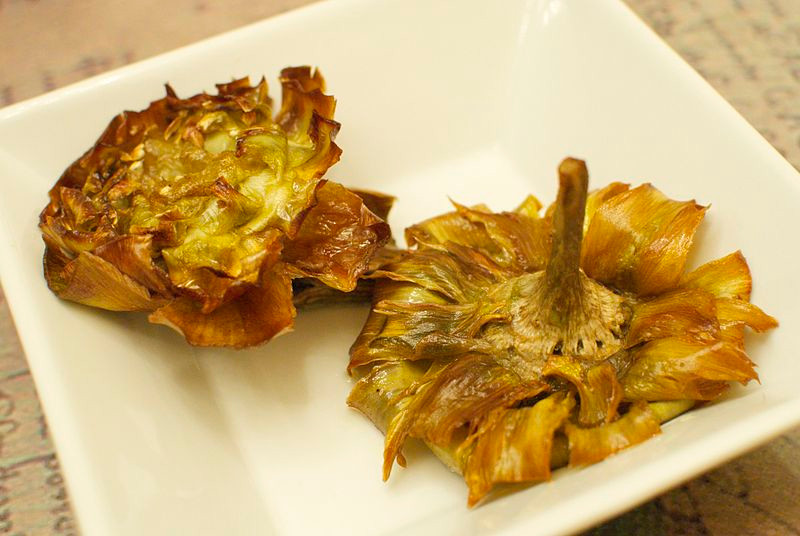
One of the best-known Roman specialties, whose origin are to be found in the Jewish community of the eternal city! Slightly difficult to make, they can be served as an appetizer, as a main course or as a side dish. The secret – as it often happens – is in the raw material: the
Carciofi alla giudia is not made with any type of artichoke but with the kind known as
mammole, that are large and fleshy. They are dipped and fried in boiling oil (and garlic, according to many) keeping out of the oil a piece of stem which is cooked separately and which, at the end, will remain soft in contrast with the crunchiness of the leaves. A friend (who’s a chef) told us that one of the tips for success is a splash of cold water on the artichokes when they are just out of the boiling oil at the end of cooking.
2. Tonnarelli cacio e pepe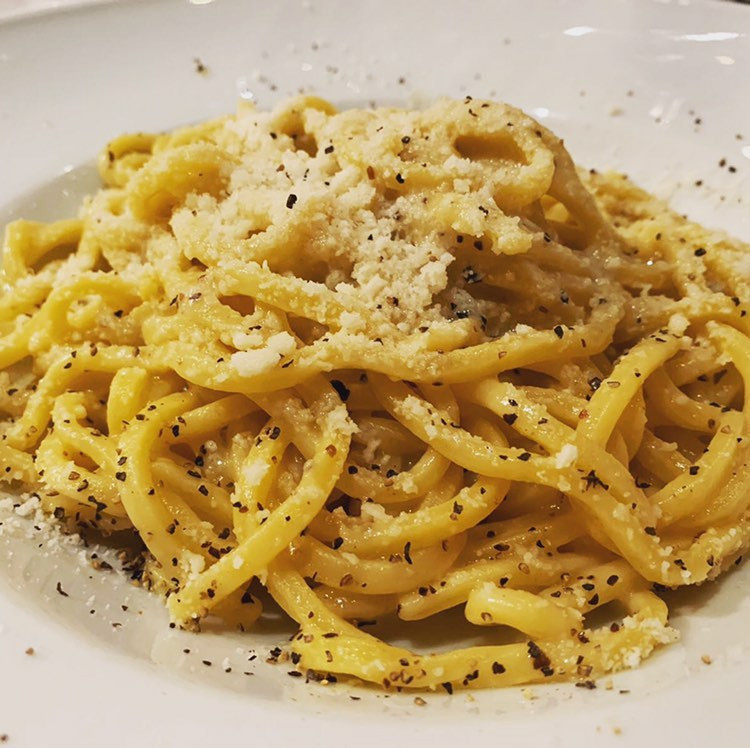
Tonnarelli are a kind of pasta that may remind
spaghetti to those who are unacquainted with the mysteries of the
hundreds of shapes of Italian pasta. This main dish – although, as you may know, in Italian we say “first dish” – originates from the shepherds’ culture of the neighbouring countryside. In some
trattorias in the Capital city of Italy, it is customary to bring this dish to the customer’s table inside a half-emptied form of
pecorino cheese, where the tonnarelli are turned and shuffled to give them more savour before being served on actual plates. A nice spectacle to be enjoyed first with the eyes and then with the mouth! We actually
wrote about about cacio e pepe in more details in another post and here you can find the recipe.
3. Rigatoni con la pajata – another type of pasta, what a surprise!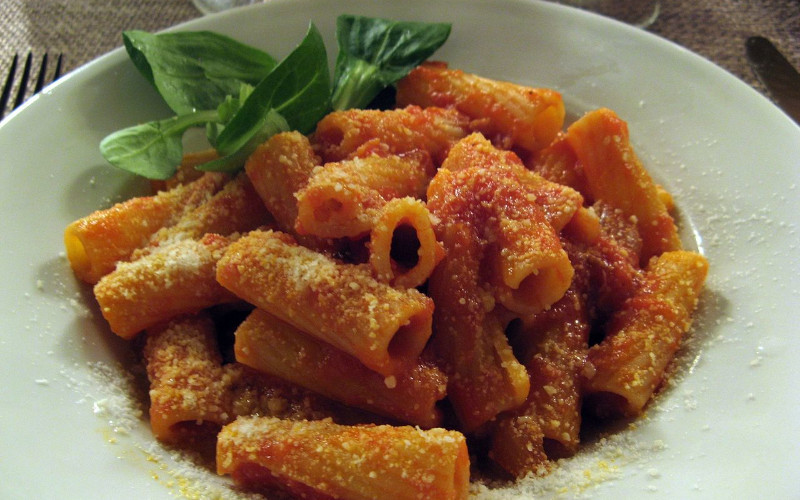
One of the cornerstones of Roman cuisine, we could not fail to include it in our list of 10 Roman dishes not to be missed! It is a simple dish but with an intense flavour, in line with the most authentic Roman culinary tradition. The rigatoni’s sauce is made of tomato sauce (of course) enriched by an ingredient that is no longer very common in everyday cooking: the pagliata (Italian) or pajata (Roman dialect), the first intestine of a calf: one of the many components of the “fifth quarter” that we mentioned earlier. A dish of “poor cuisine”, celebrated by many, especially in films and series (do you like Italian cinema?).
4. Vignarola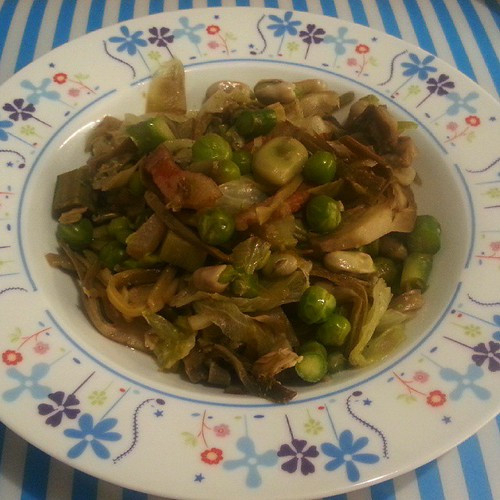
A dish that is typical of spring, rooted in farmers and peasants culture, prepared with all the first fruits of this period: broad beans, peas, artichokes plus… the inevitable bacon. There is no agreement among purists as to whether or not romaine lettuce should be added. We’ll leave the question open. In Rome it can be served both as an appetizer and as a side dish. Absolutely to be savoured with a nice
bruschetta topped with oil, salt and a little rub of garlic. Don’t ask for it if it is not spring:
it won’t taste the same!
5. Abbacchio alla scottadito – Lamb chops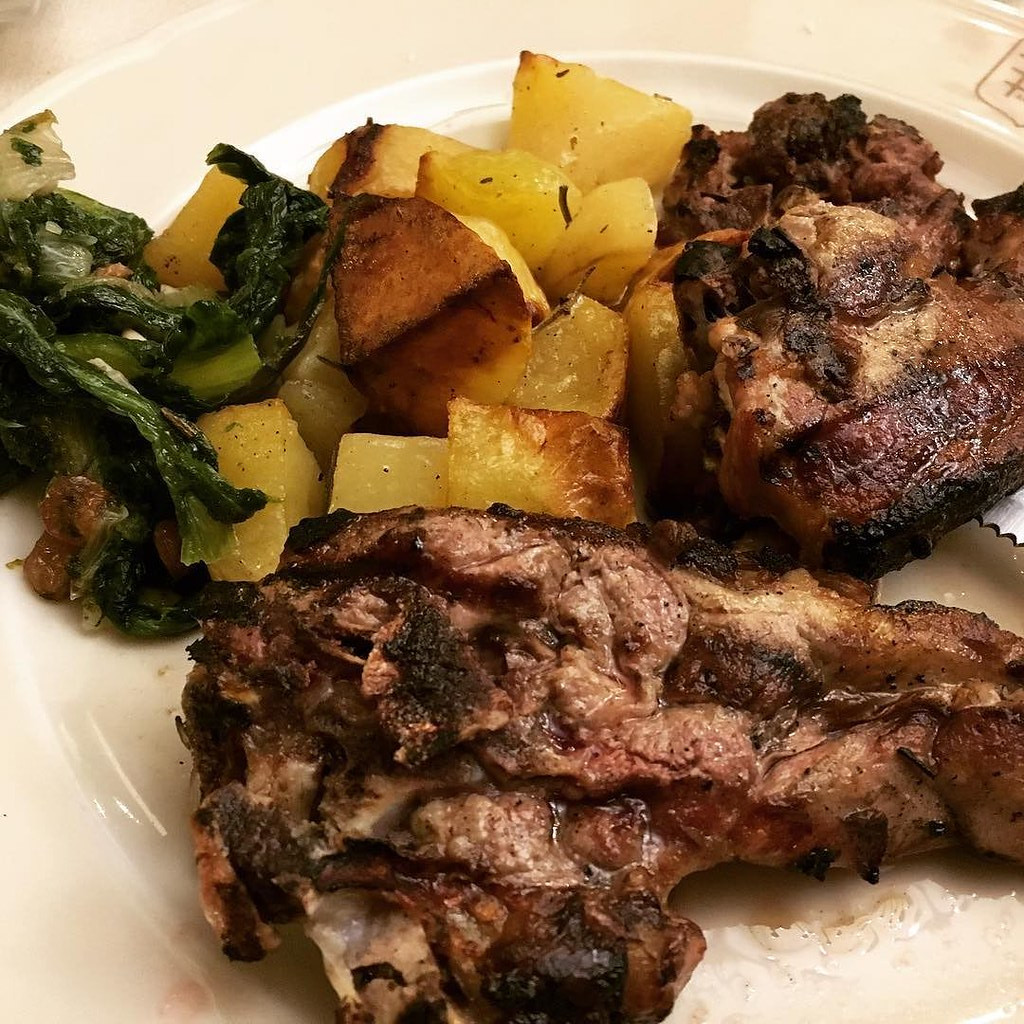
A simple recipe, made with lamb chops seasoned with salt and pepper and spread with butter or olive oil before grilling. It is served hot – hence the name (scottadito literally means finger-burning, while abbacchio means young lamb). It is usually found around Easter, to be savoured in cheerful company and, as the name suggests, strictly with your fingers!
6. Trippa alla romana – Roman-style tripes
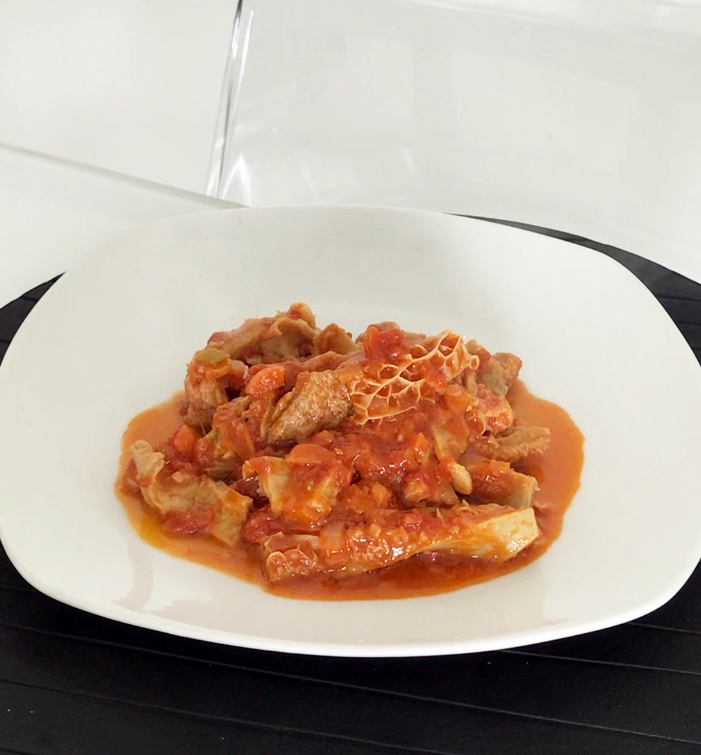
In its Roman version, tripes are enriched with three fundamental ingredients: mint, bacon and
pecorino romano cheese. It is considered a second course, but being very substantial it can be used as a single dish. Traditionally, Roman-style tripe is served during lunch on Saturday, so much so that even today in the trattorias of Trastevere you can read "Saturday tripes"!
7. Coda alla vaccinara – Tail… cowboy style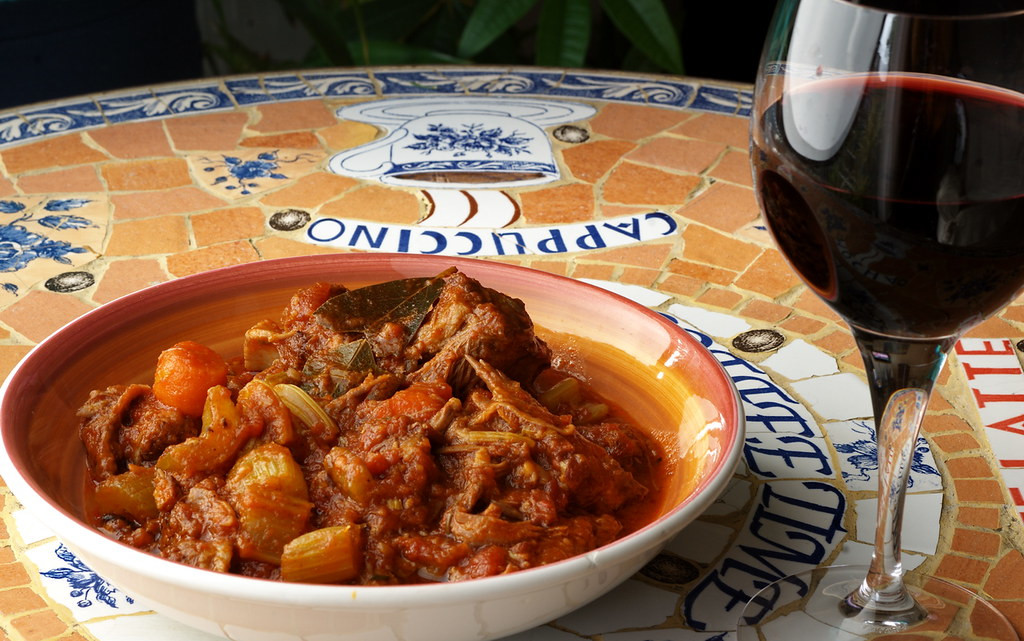
An incredibly tasty dish, that is very ancient too. As the story goes, in fact, it was served in the taverns of the ancient Roman neighbourhood where there lived the vaccinari: an old word meaning the butchers of cattle but also for cowboys, since in the old times the owner was often also the person who butchered the animal. And since in Roman cuisine “nothing is thrown away!”, even the bovine tail is cooked: in small pieces, stewed for a long time and seasoned with chopped vegetables and peeled tomatoes. Unmissable!
8. Fagioli con le cotiche – Beans with pork rind
A real classic. In fact, there are still restaurants in Rome named “Er faciolaro”, that is to say “The beans cook”. And beans, in Rome, usually go together with pork rind. This is more of a fall and winter dish, made with dry white beans, first cooked in boiling water and then browned in oil, garlic and parsley, completing with tomato sauce. Simple, warming and very tasty.
9. Puntarelle – Chicory sprouts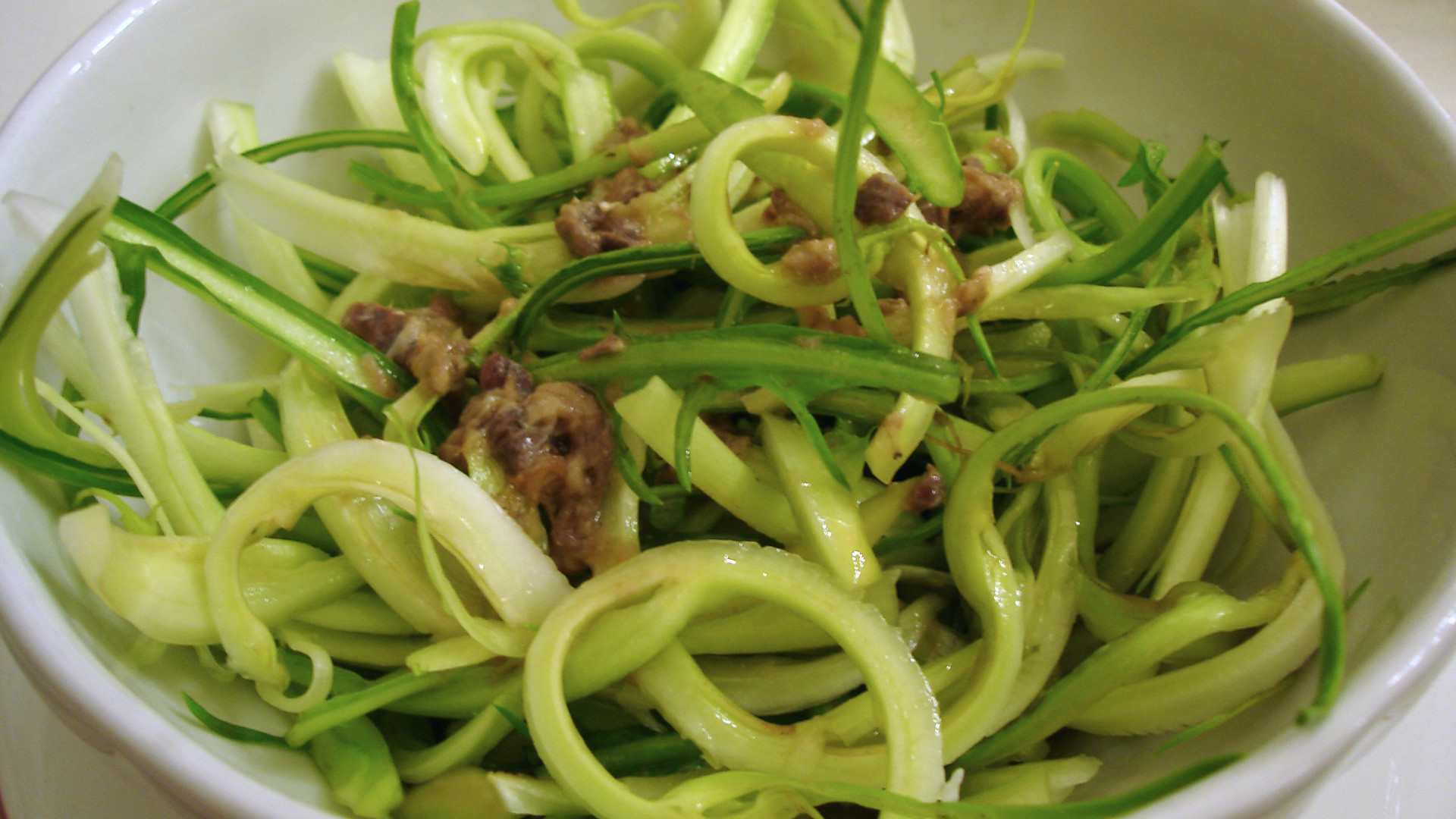
The chicory sprouts are eaten raw in salads and seasoned with a “pinzimonio” sauce (made with oil and salt, sometimes enriched with garlic and/or anchovy and/or vinegar). Although today they can be found almost all year around, they are best between March and May, their natural sprouting season. And
you know how important and how tastier it is to eat seasonal food. They may be served as an appetizer, as a side dish or even with your aperitivo. They are said to have diuretic and digestive properties, which is not bad especially after a rich lunch like the Roman one!
10. Dulcis in fundo – Sweet in the end (ancient Latin proverb)
Roman cuisine is not famous for its desserts, and often when walking around Rome you will find shops offering specialties from other regions, as for example the Sicilian
cannoli,
granatine and
cassata or
Neapolitan sfogliatelle. However, there is one undisputed king of Roman patisseries: the
Maritozzo stuffed with whipped cream. They say that this leavened-dough brioche was born as a dessert during Lent; it is also said that at the beginning it did not have a creamy filling. Back in the days, the dough was enriched with pine nuts, raisins and candied orange. Today the Romans prefer it with fresh whipped cream and that's fine with us too!
PS: It was a pain for us to leave out of this list so many tasty dishes that are part of the Roman cuisine: from white pizza with mortadella to “fritti romani”. This didn’t happen because they are not good enough to be put on the ten dishes list! On the contrary, they deserved a place here but… this is a list of our ten favourites! If you’re in Rome, make sure to try them all, without forgetting the supplì (rice balls stuffed with melted cheese, breaded and fried), the fried cod fillets, the . . .








